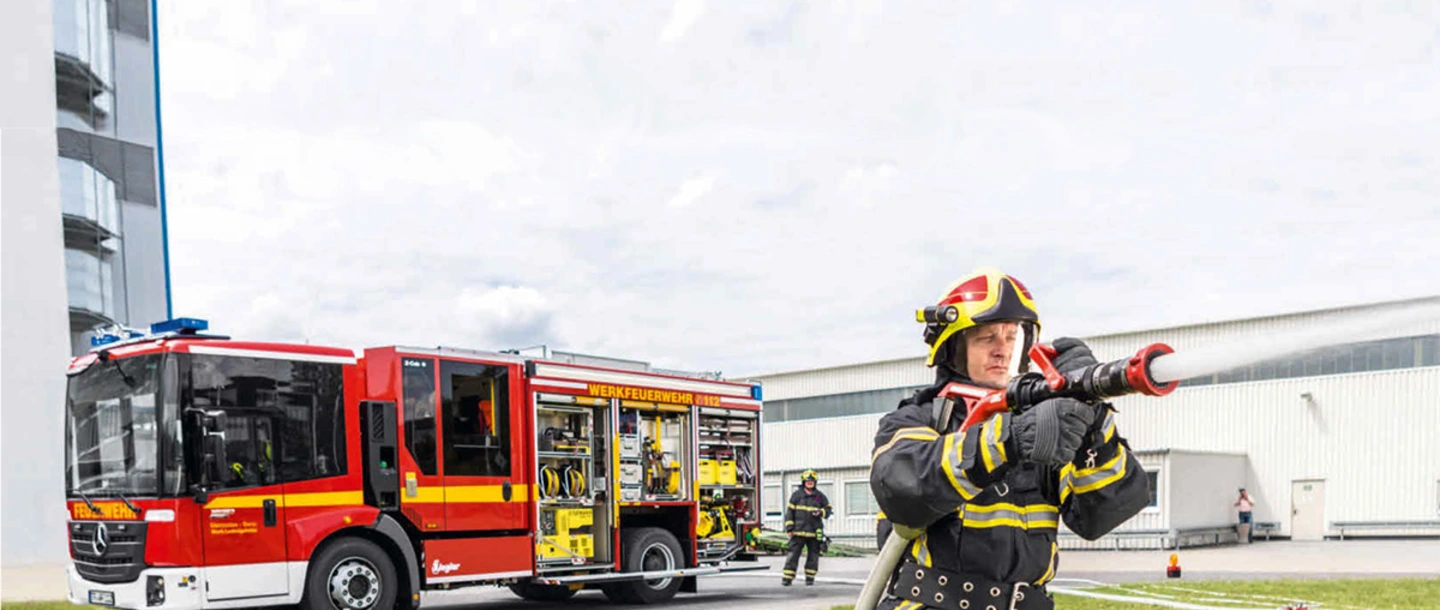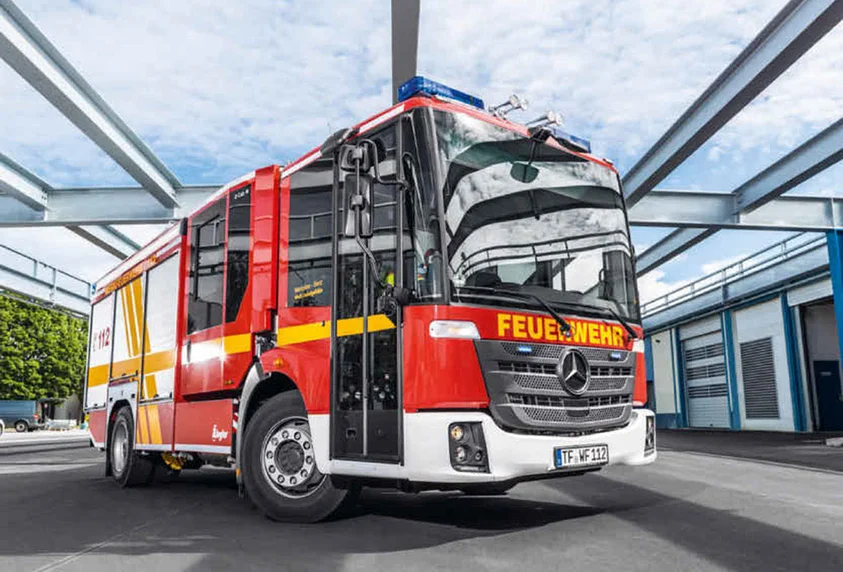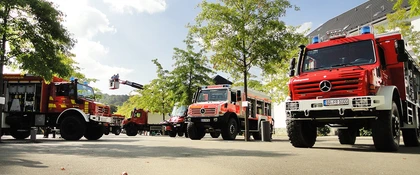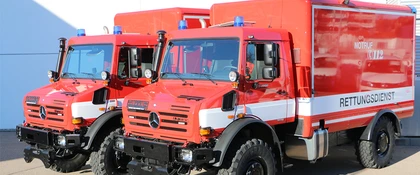Mercedes-Benz fire brigade relies on Econic as a compact auxiliary fire-extinguishing vehicle.
A six-member fire-fighting squad along with extensive fire-fighting equipment and technical auxiliary services makes it to the scene of a fire speedily and safely. As the Econic is only 3.20 metres high, it also fits inside fire stations with low ceilings.
With Econic well prepared. Mercedes-Benz plant fire brigade Ludwigsfelde.
What are the makings of an outstanding fire-fighting vehicle? In a nutshell: “It must be fast and highly effective,” says Patrice Fischer, head of the plant fire brigade and fire protection officer at the Mercedes-Benz plant in Ludwigsfelde.
“When things get dangerous, the first attack by the fire brigade must be effective. After all, there isn’t enough time to call for additional equipment or personnel.” Fischer (38) and his team are ideally prepared for any futuremissions: with their new auxiliary fire-extinguishing vehicle (AFV) based on the Econic 1830. “As is usual in any modern vehicle production facility, there are huge fire compartments and numerous paint shops in the halls on the plant’s premises,” explains Fischer. “And there are plenty of highly flammable but safely stored materials and substances on location. When we get called out, we need to be prepared for any eventualities.”
One of the biggest industrial employers in the region.
The location in Brandenburg, some 30 kilometres south of Berlin, is steeped in a long industrial tradition. Utility vehicles have been produced in Ludwigsfelde since 1965. The first Mercedes-Benz LN2 transporters came off the production line in early 1991. Since 2006, the open models of the Mercedes-Benz Sprinter have been manufactured in Ludwigsfelde. The plant has a workforce of around 2 000 employees and is one of the biggest industrial vocational training providers and employers in the region. “Our plant fire brigade is made up of 30 professional fire-fighters as well as 24 volunteers from Production and Administration,” said Patrice Fischer. As soon as the alarm is sounded at the fire station staffed 24 hours a day, a six-member squadron heads out to launch the first attack. The crew consists of the squadron commander, an engineer, an attack and a water team. All of them are full-time fire-fighters, all of them graduates of the State Fire-fighting School. They reach their destination quickly and safely on board their new Econic 1830.
The Econic is absolutely perfect for us.
Patrice Fischer, Head of the plant fire brigade Ludwigsfelde
Custom-made for the needs of plant fire brigade.
The compact powerhouse with its 220 kWstrong Euro VI engine and the Allison automatic transmission with retarder were specially configured by the bodybuilding company Ziegler in Giengen an der Brenz to accommodate the squadron. The equipment superstructure design is based on the fire-fighting equipment standard HLF 20 and customised to meet the needs of the plant fire brigade.
“Smaller crew, more equipment,” is how Patrice Fischer sums up the concept. “With its low build, the Econic fits easily into our existing fire station. And when we are in a hurry, it can generate the kind of speed that we need. The large panoramic windshield and the reversing camera give us excellent all-round vision.”
Low-Entry-Concept is a big plus.
The new jewel of the plant fire brigade at Ludwigsfelde is fitted with a Ziegler FPN 10-2000-1H fire pump and a host of other fire-fighting equipment and auxiliary technical gear. The extinguishing agent tank holds 2 000 litres of water and 200 litres of foamconcentrate. Four compressed-air breathing apparatuses for use by the fire-fighters are provided inside the crew compartment behind the driver’s cab. “Getting in and out of the cockpit or the crew compartment, my fire-fighters have one less step to tackle than in similarly equipped vehicles based on other models,” says an enthusiastic Patrice Fischer. “The Econic’s low-entry concept is a massive plus – not only for the members of the crew carrying their 15-kilo breathing apparatuses on their backs.”
Source: Transport Magazin 4/2016
Text: Christian Schmidt
Photos: Kristian Barthen





